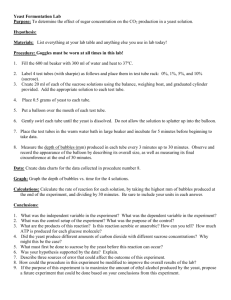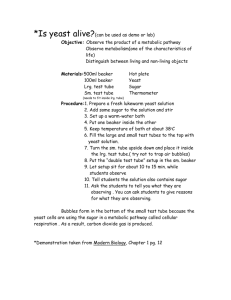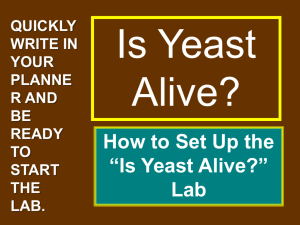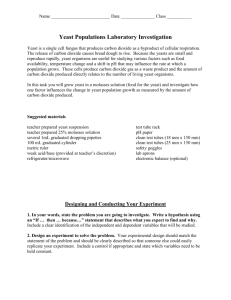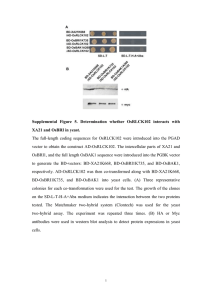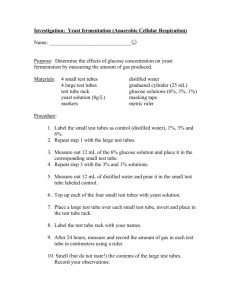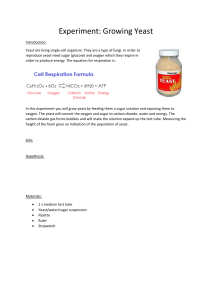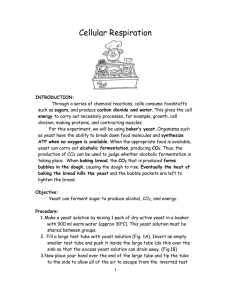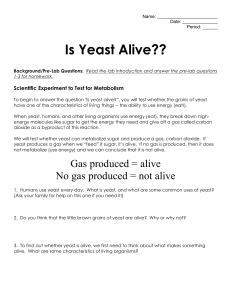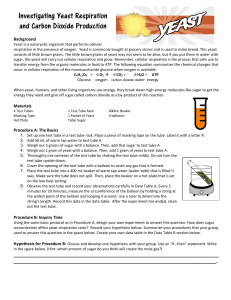Student version: Taste Test - Can Yeast Tell the Difference?
advertisement
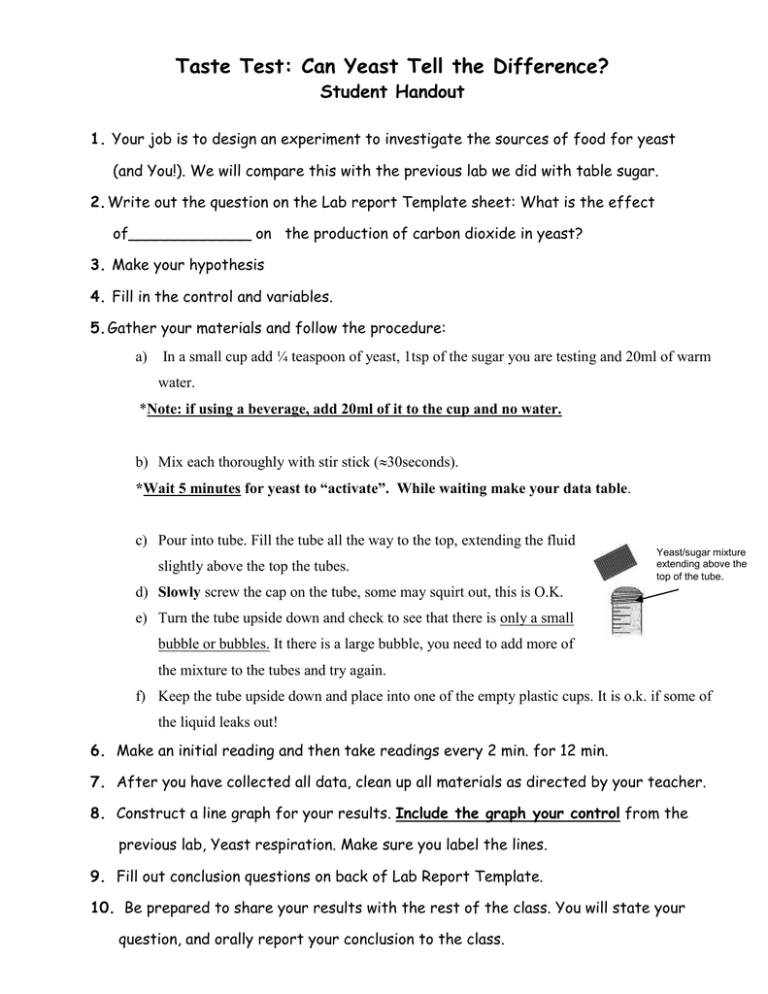
Taste Test: Can Yeast Tell the Difference? Student Handout 1. Your job is to design an experiment to investigate the sources of food for yeast (and You!). We will compare this with the previous lab we did with table sugar. 2. Write out the question on the Lab report Template sheet: What is the effect of_____________ on the production of carbon dioxide in yeast? 3. Make your hypothesis 4. Fill in the control and variables. 5. Gather your materials and follow the procedure: a) In a small cup add ¼ teaspoon of yeast, 1tsp of the sugar you are testing and 20ml of warm water. *Note: if using a beverage, add 20ml of it to the cup and no water. b) Mix each thoroughly with stir stick (30seconds). *Wait 5 minutes for yeast to “activate”. While waiting make your data table. c) Pour into tube. Fill the tube all the way to the top, extending the fluid slightly above the top the tubes. Yeast/sugar mixture extending above the top of the tube. d) Slowly screw the cap on the tube, some may squirt out, this is O.K. e) Turn the tube upside down and check to see that there is only a small bubble or bubbles. It there is a large bubble, you need to add more of the mixture to the tubes and try again. f) Keep the tube upside down and place into one of the empty plastic cups. It is o.k. if some of the liquid leaks out! 6. Make an initial reading and then take readings every 2 min. for 12 min. 7. After you have collected all data, clean up all materials as directed by your teacher. 8. Construct a line graph for your results. Include the graph your control from the previous lab, Yeast respiration. Make sure you label the lines. 9. Fill out conclusion questions on back of Lab Report Template. 10. Be prepared to share your results with the rest of the class. You will state your question, and orally report your conclusion to the class. Conclusion: A 1. Was your hypothesis correct? EXPLAIN why you accepted or rejected the hypothesis using data from the experiment. 2. What was the control? (If no control, why?) 3. Summarize your data. B. 4. What were the independent and dependent variables. 5. Explain how the experiment may have produced data that was incorrect (sources of error). C. in 6. What experiment would you test in the future that relates to the ideas this lab? 7. real How does this experiment relate to what we are learning in class? BE SPECIFIC-use the correct vocabulary terms. 8. Describe how the information learned in this experiment relates to the world.
